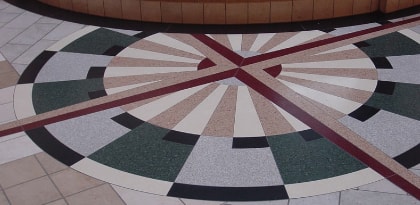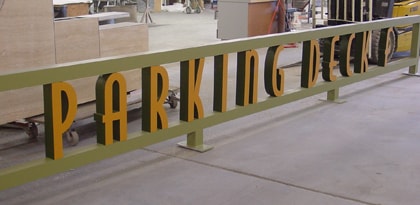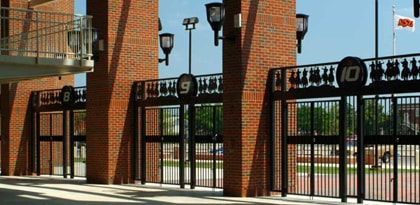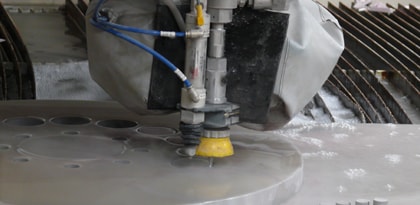Water Jet Cutting Overview
A water jet cutter is a tool capable of slicing into metal or other materials using a jet of water at high velocity and pressure, or a mixture of water and an abrasive substance. the process is essentially the same as water erosion found in nature but greatly accelerated and concentrated. It is often used during fabrication or manufacture of part for machinery and other devices. It is the preferred method when the materials being cut are sensitive to the high temperatures generated by other methods. It has found applications in a diverse number of industries from mining t aerospace where it is used for operations such as cutting, carving and reaming.
A Brief History of Abrasive Water Jet cutting
In the 1950’s, forestry engineer Dr. Norman Franz experimented with an early form of water jet cutter to cut lumber. However, the technology did not advance notably until the 1970’s when Dr. Mohamed Hashish created a technique to add abrasives to the water jet cutter. Today the water jet is unparallel in many aspects of cutting and has changed the way many product are manufactured. Many types of water jets exist today, including plain water jets, abrasive water jets, percussive water jets, cavitation jets and hybrid jets.
Water Jet Cutting Operation
The cutter is commonly connected to a high-pressure water pump where the water is ejected from the nozzle, cutting through the material by spraying it with the jet of high-speed water, Additives in the form of suspended grit or other abrasives, such as garnet and aluminum oxide, can assist inn this process.
Benefits of Water Jet Cutting
An important benefit of the water jet is the ability to cut material without interfering with the material’s inherent structure as there is no “heat affected zone” or HAZ. Minimizing the effects of heat allows metals to be cut without harming or changing intrinsic properties.
A ``Green Technology``
Water Jet cutting is considered a “gree” technology. Waterjets produce no hazardous waste, reducing disposal costs. They can cut off large pieces of reusable scrap material that might have been lost using traditional methods. Parts can be closely nested to maximize material use, and the waterjet saves material by creating very little kerf. Waterjets use very little water (a half a gallon to approximately on gallon per minute depending on cutting head orifice size), and the water that is used can be recycled using a closed-looped system. Wastewater usually is clean enough to filter and dispose of down a drain. the garnet abrasive is a non-toxic natural substance that can be recycled for repeated use. Garnet usually can be disposed of in a landfill. Waterjets also eliminate airborne dust particles, smoke, fumes, and contaminants from cutting materials such as asbestos and fiberglass. This greatly improves work environment and reduces problems arising from operator exposure.
Water Jet Cutting Process
1. Uses a high velocity stream of abrasive suspended in a stream of Ultra High Pressure Water (30,000 – 90,000 psi) which is produced by a Waterjet Intensifier Pump.
2. Is used for machining a large array of materials, including heat-sensitive, delicate of very hard materials.
3. Produces no heat damage to work piece surface of edges.
4. Nozzles are typically made of sintered boride.
5. Produces a tapper of less than 1 degree on most cuts, which can be reduced or eliminated entirely by slowing down the cut process or using a dynamic waterjet head.
6. Distance of nozzle from work piece affects the size fo the stream width and the removal rate of material. Typical distance is .125″
The Perfect Choice For Cutting Needs

Perfect Edge Awarded 2017 StoneFloors Flame of Excellence
Perfect Edge has three FLOW abrasive water jet machines. Each machine may also be setup using water only without an abrasive. These machines are integrated flying bridge machines. One machine is a Dynamic water-jet. The Dynamic water-jet has an articulating head which allows thicker materials to be cut with virtually no taper.
The cutting surface area is 6 feet by 12 feet. Larger areas can be cut with additional set-up charges, provided a weight limit of 10,000 Lbs is not exceeded. Additionally, certain materials such as glass, acrylic, porcelains, ceramics and some plastics require a special set-up. Water only (no abrasive) cutting is used for vinyl, VCT, wood, paper and rubber. Tolerances on water only cutting are tighter, allowing for a tighter fit on inlays.
Flooring Inlays
Imagine the exquisite details of your design, logo or coat of arms made of solid stone inlaid into your floor! Radius work is a specialty of Perfect Edge. Flooring jobs range from inlays to an entire commercial flooring project, such as a mall.

Commercial Signage
Any design can be cut with water-jet technology. Drop, Letters Or Logo For Your Commercial Business. And Best Of All, Just About Any Material Can Be Cut To Your Specification, Including Metals, Stone, Marble, Plastics, Vinyls, Or Wood.

Architectural Applications
Perfect Edge has experience in multiple substrates to cut nearly any design. What better way to promote a distinct theme or business motto, for restaurants to parking lots, for outdoor signage to entry gates, for flooring to institutional logos!

Industrial Applications
Applications such as sprockets, gaskets, flywheels, flanges are some uses for waterjet cutting. Other examples include automotive applications, tooling applications and a multitude of other industrial uses.

